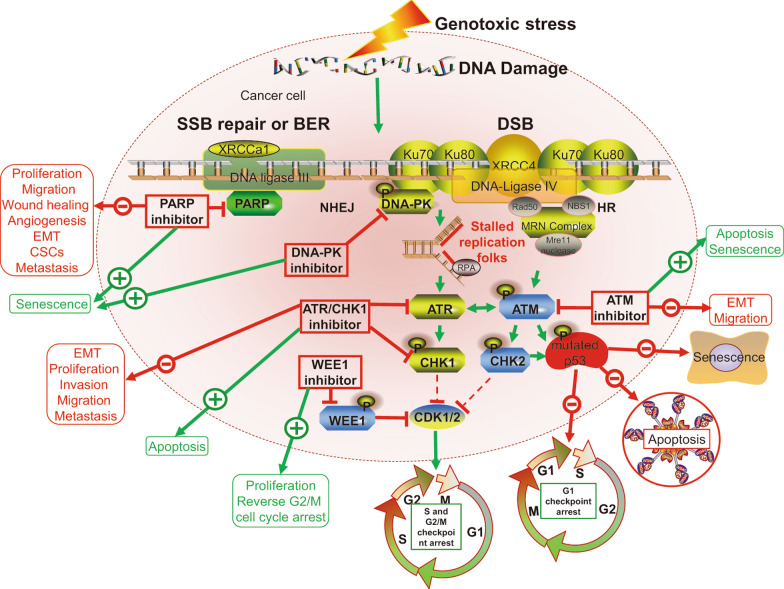Fig. 4.
Biological role of targeting DDR protein upon DNA damage in cancer cells. Upon DSB and replication stress, ATM, ATR, and DNA-PKcs are recruited to DNA damage sites, and ATM/CHK2 and ATR/CHK1 pathways are activated. In normal cells, ATM activates p53 by phosphorylation, leading to G1-phase arrest, senescence and apoptosis. However, in tumor cells, p53 is inactivated frequently, disrupting the G1-S cell cycle checkpoint, and making the cells dependent on G2-M cell cycle checkpoint for arrest upon DNA damage. The phosphorylation of WEE1 abolishes the activation of CDK1/2, inducing G2/M cell cycle arrest. PARP enzymes are primary proteins involved in SSB repair or base-excision repair (BER). Single-strand break (SSB); base excision repair (BER); double-strand breaks (DSB); non‐homologous end joining (NHEJ); homologous recombination (HR); ataxia telangiectasia mutated protein (ATM); poly-ADP-ribose polymerase (PARP); ataxia telangiectasia and Rad3-related protein (ATR); DNA-dependent protein kinase (DNA-PK); checkpoint kinase 1/2 (CHK1/2); cancer stem cells (CSCs); epithelial–mesenchymal transition (EMT)

